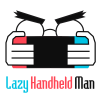One of the most popular questions I’ve been asked is: How do I stretch to fit screen in RetroArch? RetroArch is like a hub of emulators for every retro system, and each system has a different resolution as well as aspect ratio, so you can’t find a perfect system to fit everything. That’s why in most of my handheld reviews, I wrote about the best system that you should emulate in each retro handheld emulator. However, I know the reason to buy one handheld that covers every retro system, so knowing to stretch to fit screen is essential.
I’m writing this guide in the series of RetroArch tutorial, which is the current frontend system of a lot of retro handheld emulators. I believe that it would help you in the path of collecting many retro handheld devices, because you’ve already known that, you may be the one who like to play with new devices.
How do I stretch to fit screen in RetroArch?
To stretch to fit screen in RetroArch, you must go to the RetroArch menu in your retro handheld emulator. Access RetroArch menu is a bit different between other devices, and it would be a very long wall of text if I try to list all of possible handheld devices. So you can scroll in the menu bar and choose the right tutorial, or hover over search bar to find your exact handheld device.
RetroArch’s UIs consists of these main interfaces:
- Ozone UI: The default UI of RetroArch menu, which can be found almost everywhere, like Batocera, Windows, Android or Linux.

- RGUI: A simple RetroArch’s UI for mobile ports, like starter retro handheld devices (Miyoo Mini Plus, for example).

- XMB Menu: The old UI of RetroArch, which you can change from Ozone.

- GLUI: A new UI for Android.

So go to Settings › Video › Scaling. If you don’t see Settings as an option, you can press back one level on your device (mostly B button for today retro handheld emulator, and A for today handheld gaming PC).
Then you can choose:
- Integer Scale: scale the original system to 2x, 3x, or 4x (integer value). For example, the Miyoo Mini Plus has a resolution of 640 x 480, and the original Game Boy system is 160 x 144. As a result, the handheld will scale 3x from 160 x 144 to 480 x 432, giving black bars from both side as it can’t scale 4x to 640 x 576.
- Keep aspect ratio: enabled: fit to screen, disabled: stretch.
So if you want to stretch to fit screen in RetroArch, and your handheld device can’t scale pixel-perfect the targeted system, you can enable Keep aspect ratio to stretch the screen.
